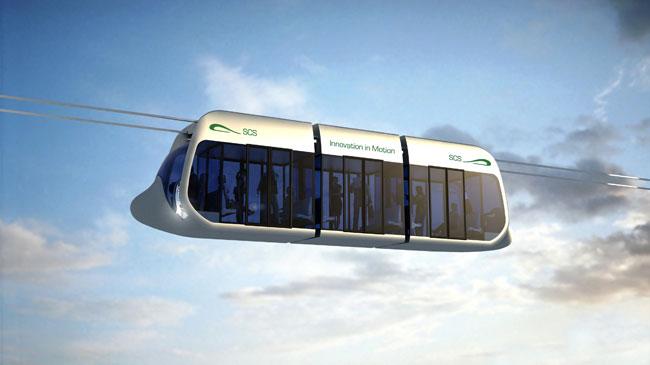|
Sphere of application
High-speed off-street transportation of passengers and cargoes:
- in the city;
- between city and suburb;
- between the city and the airport;
- between the nearby cities.
Key features
- Speed — up to 150 km per hour.
- Capacity of rolling stock:
- passengers — up to 100 persons;
- cargo — up to 10 tons.
- Road gradient — up to 15%, with a special type — up to 30%.
- Transportation distance — up to 200 km.
- The volume of high-speed urban transportation:
- passengers at rush hour — up to 25 thousand people;
- cargo — up to 1 thousand tons per day.
- The cost of high-speed city route, excluding the cost of rolling stock, stations and infrastructure, — from USD 1.5 million per km.
- Net cost of city traffic — 2 times lower than the net cost of underground subway, 3 times — the tram, 5 times — the monorail.
Competitive advantages
- Decrease of capital expenditure for construction:
- significant decrease in land requirements necessary for the track and infrastructure;
- exception of the roadbed, transport tunnels, bridges, viaducts, multi-level interchanges, elevated and underground pedestrian crossings;
- rugged terrain, low strength of underlying soils and difficult geographical and climatic conditions does not lead to higher prices;
- decrease on the order of resource requirements string-rail overpass compared to traditional transport overpass.
- Reduction of operating costs:
- by reducing the consumption of energy and fuel;
- by reducing staff costs;
- by reducing the volume of track and repair work;
- in winter not necessary clean the track structure of ice and snow.
- Reducing the net cost of passenger and freight traffic in two or more times.
- The possibility of development and settlement of new territories in remote places, comfortable to live, — islands, mountains, sea shelf, etc.
- Improving the reliability and safety of all-weather and year-round operation of high-speed city UST in any climatic conditions.
- The possibility of combining the track structure and its support with power lines and communication lines — wire, fiber optic, radio relay, cellular.
Environmentally friendly
- Low resource consumption and low energy consumption at all stages of the life cycle of city suspended UST (design, construction, operation and dismantling).
- City suspended UST does not violate the terrain, biogeocoenosis and biodiversity neighborhood.
- The road does not destroy the fertile soil and vegetation.
- The road does not prevent:
- the movement of ground and surface waters;
- the movement of people, pets and wild animals;
- the work of the construction and special equipment.
Reliability and safety
- The presence of anti-derailment device.
- Ten-fold margin of safety of string elements.
- Stability to ice, glaciation, snowdrift, fogs, dust and sand storms.
- Reliability in any extreme air temperatures.
- High stability to vandalism and terrorist acts.
- Stability to natural disasters (with special equipment and minimal rise in the price):
- earthquake of magnitude up to 10 on the Richter scale;
- floods with water depth up to 10 m and more;
- hurricane wind with speed up to 250 km per hour or more;
- tsunami with wave height up to 20 m and more.
|
|

|






